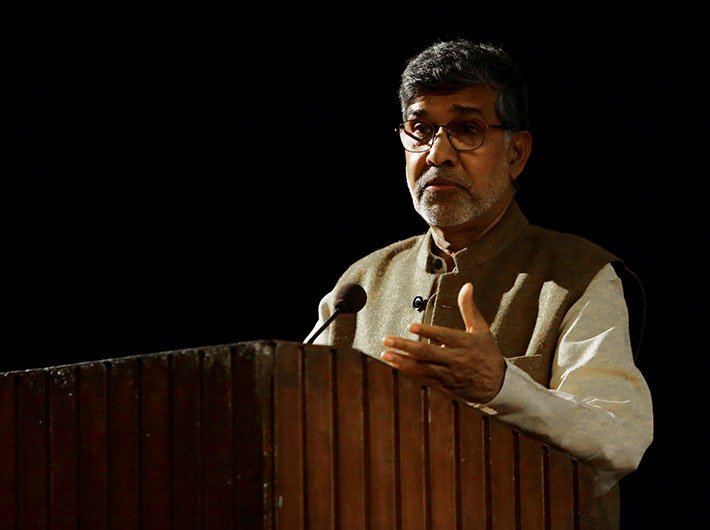The Child Labour (Prohibition and Regulation) Amendment Bill has been passed by the Lok Sabha. Child rights activist and Nobel laureate Kailash Satyarthi talks about the new bill and what more is needed
The Child Labour (Prohibition and Regulation) Amendment Bill, 2012 has been passed by the Lok Sabha and is expected to be notified soon. Child rights activist and Nobel Peace Prize winner Kailash Satyarthi spoke to Yogesh Rajput on how effective the new bill would be and what more is needed to protect children.
How do you assess this new law, expected to arrive soon, in preventing child labour?
Well, I have a mixed opinion about it. To give you a background, we have been strongly fighting for children’s rights since 1986 when the first-ever law on child labour was enacted. Even before that, very few NGOs and individuals used to work for the cause. In fact, between 1981 and 1985, Bachpan Bachao Andolan and I had to struggle a lot to get in place an Indian law on child labour. And when it did come, it was quite weak and its enforcement weaker. The point is that children had never been a priority for politicians. And thus, three generations of children have been lost [since 1986].
Now that a new law was being made, we did not sit on the fence and watch the action; we discussed the issue at length with politicians and bureaucrats to ensure a stringent law. But to give a precise answer to your question, we do not see the end of child labour in the near future with this law.
The amendments exempt punishment if a child is employed by his or her own family members in their enterprise. Do you feel there is a grey area here in defining child labour?
There is no clear definition of child labour. Though the Delhi high court has given a definition, it could have been used by the government.
As far as employment by family is concerned, it [the topic] is very dicey. The amendment allows children to work in family enterprises after school hours. But the monitoring of attendance in schools is so poor that it is often seen that children are shown to be enrolled in school registers and their attendance is marked, but in reality they are being trafficked. Who is going to check every day that children are being employed by their immediate or extended family members? Till now, we have not been able to ensure minimum wages for adult workers, so how can we be so meticulous in cases of children?
For example, if a six-year-old child is being compelled to help his family post school hours due to various socio-economic reasons, it would not be good for his well-being. Whether children are going to school, getting good quality education, their freedom is not being compromised – all these are very difficult to monitor. Similarly, many children work in slaughterhouses or in butchery shops along with their fathers. There have been many studies that tell how badly it impacts children’s mental and psychological well-being.
Take for instance a mother of a six- or seven-year-old takes her child along to a house where she works for assistance, the owner of that house may say that she has not employed the child. These are some of the complications.
The new law would have stricter punishment including those for repeat offenders. Also, the crime has been made a cognizable offence. Do you think this would send a strong message?
We welcome the step but we have only moved a few miles. We cannot celebrate till we reach the destination. If we leave so many lacunae in the law, the enforcement becomes all the more difficult.
Where do you think the government is faltering? What more would you recommend?
The minimum thing we had demanded from the ministry was that at least the list of 83 hazardous activities [wherein children or adolescents cannot work] remains intact. This has now been brought down to three.
We had also asked for a window for new [hazardous] occupations to be added in future, as the nature of the industry sector is such that new processes keep coming up every now and then. For example, in recent times, industries dealing with battery waste and parts of mobile phones were added in the list of 83 items.
We were also asking to incorporate proper rehabilitation of child labourers. In 1986, the government had the excuse of not being able to put a blanket ban on all forms of child labour due to socio-economic conditions at that time. But today, our GDP and per capita income have tripled since then, so why continue with the same argument?
How can the mindset of people be changed when it comes to employing children?
We have been trying to change the mindset of people since 1980. There was no law then and no interest from the media on this issue. There was also no judicial intervention at that time. We have made some progress since then. For example, over the last decade one would have hardly found people roaming in malls along with their domestic helps to carry their shopping bags. This is because people now feel guilty or ashamed if they do such things.
Changing the mindset can be made possible with public awareness built through the media; government too has to take initiatives; child society organisations have to be more pro-active, rather aggressive.
I have also been speaking to religious leaders urging them to once in a while speak on this issue since they have such a big outreach.
yogesh@governancenow.com
(The interview appears in the August 1-15, 2016 issue)

